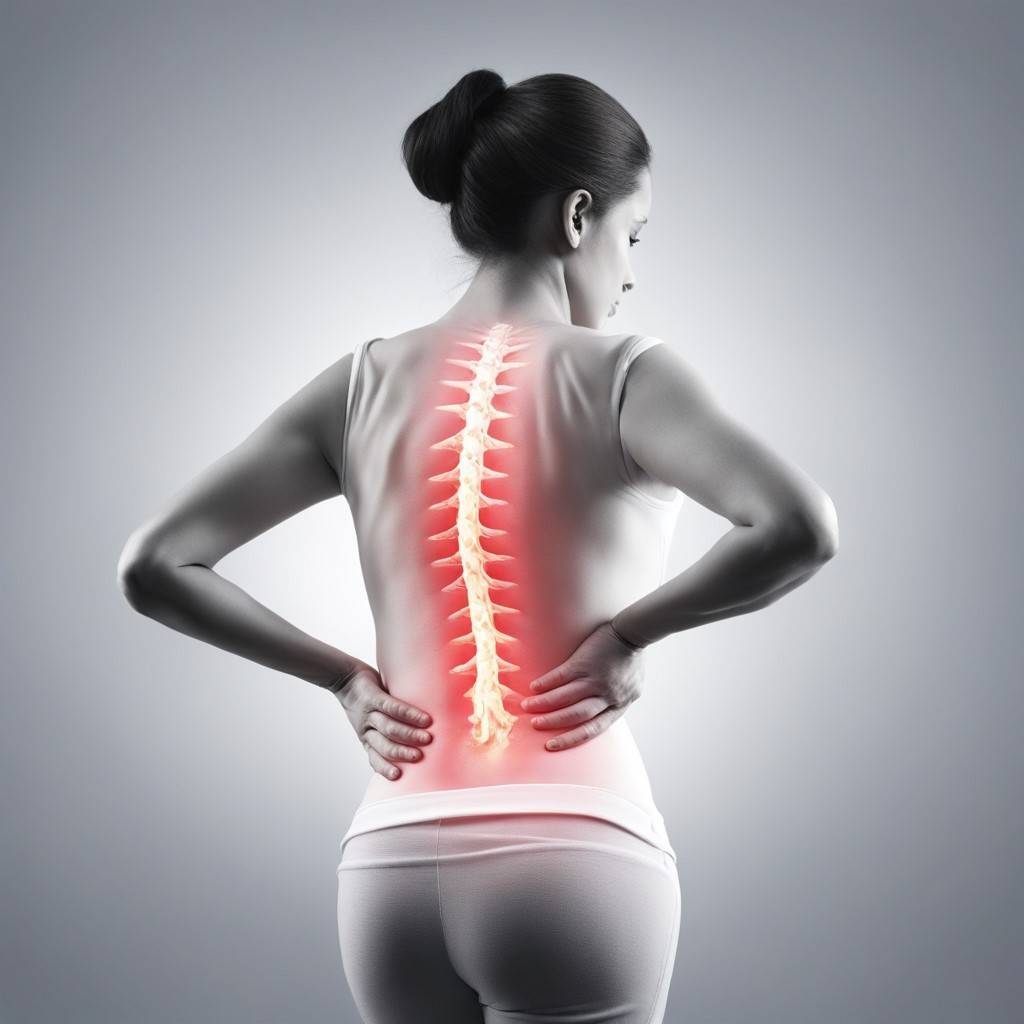Discover expert tips to prevent lower back pain during core exercises. Explore the best strategies for a pain-free workout. Say goodbye to lower back pain.
Are you tired of experiencing lower back pain every time you engage in core exercises? You’re not alone. Many people face this issue, and it can be not only uncomfortable but also discouraging when maintaining a regular fitness routine. However, fear not! In this comprehensive guide, we will explore the best strategies to prevent lower back pain during core exercises.
Understanding Lower Back Pain

What is Lower Back Pain?
Lower back pain, often referred to as lumbar pain, is a common discomfort that affects millions of people worldwide. It can range from mild to severe and may be acute (short-term) or chronic (lasting for an extended period). Lower back pain can result from various causes, including muscle strain, herniated discs, spinal abnormalities, or even poor posture.
Lower Back Pain and Core Exercises

While core exercises are essential for building a strong core, they can sometimes exacerbate or cause lower back pain if not performed correctly. The core muscles play a pivotal role in supporting the spine and maintaining good posture. However, improper form, overexertion, or neglect to engage the core muscles effectively during exercises can lead to discomfort or injury.
Preparing for Core Exercises
Warm-Up and Stretching
Before diving into core exercises, it’s crucial to prepare your body adequately. Warming up helps increase blood flow to the muscles, making them more pliable and less prone to injury. Begin with light cardio exercises such as jogging in place or jumping jacks to raise your heart rate. Afterwards, incorporate dynamic stretching movements like leg swings and torso twists to limber up your core.
Proper Form and Technique
Maintaining proper form and technique is paramount in preventing lower back pain during core workouts. To do this, focus on the following:
- Alignment: Ensure that your body is properly aligned during exercises. Keep your spine neutral and avoid arching your lower back excessively.
- Engaging the Core: Before each repetition, consciously engage your core muscles. Imagine pulling your navel toward your spine to activate the deep core muscles effectively.
- Breathing: Pay attention to your breathing. Exhale during the exertion phase (e.g., when lifting your legs) and inhale during the relaxation phase. Proper breathing helps stabilize your core.
Core Exercises for a Stronger Core
Core-Strengthening Exercises
- Plank: The plank is an excellent exercise for overall core strength. Maintain a straight line from head to heels while holding the position for as long as possible.
- Russian Twists: Sit on the floor, lift your feet off the ground, and twist your torso to touch the ground on each side with a weight or without.
- Leg Raises: Lie on your back and raise your legs while keeping them straight. Lower them back down without touching the ground.
- Bridges: Lie on your back with your knees bent and feet flat on the ground. Lift your hips off the ground, engaging your glutes and core.
Progression and Modification
As you progress in your core workout routine, you can increase the intensity of these exercises or modify them to match your fitness level. Here are some ways to do so:
- Add Resistance: Use weights or resistance bands to make exercises more challenging.
- Increase Repetitions: Gradually increase the number of reps for each exercise.
- Try Advanced Variations: Explore advanced variations of core exercises to target different muscle groups.
Preventive Strategies for Lower Back Pain

Engaging Core Muscles Properly
One of the key factors in preventing lower back pain during core exercises is effectively engaging your core muscles. The mind-muscle connection is crucial for this. Concentrate on feeling the contraction in your core muscles while performing each exercise. This not only enhances the effectiveness of the workout but also helps protect your lower back.
Breathing Techniques
Proper breathing is often overlooked but plays a vital role in maintaining stability during core exercises. When you exhale during the exertion phase, your core naturally tightens, providing additional support to your lower back. Practice synchronized breathing with your movements to reduce the risk of straining your back.
Listening to Your Body
It’s essential to pay attention to your body’s signals during core workouts. If you experience any of the following signs, it’s crucial to stop the exercise, assess your form, or seek guidance from a fitness professional:
- Sharp or shooting pain in the lower back
- Tingling or numbness in the legs
- Excessive discomfort that doesn’t subside with rest
Additional Tips for Lower Back Health
Maintaining Flexibility
Flexibility is a key component of lower back health. Incorporate regular stretching routines into your fitness regimen to improve the flexibility of the muscles surrounding your lower back. Here are some effective stretches:
- Cat-Cow Stretch: On your hands and knees, alternate between arching and rounding your back.
- Child’s Pose: Kneel and sit back on your heels, reaching your arms forward to stretch your lower back.
- Hip Flexor Stretch: Kneel on one knee while extending the other leg behind you. Lean forward to stretch the hip flexors.
Incorporating Rest and Recovery
Rest days are just as important as your workout days. Overstraining can lead to muscle fatigue and an increased risk of injury, including lower back pain. Ensure to schedule rest days into your fitness routine and incorporate recovery techniques such as foam rolling, massages, and ice or heat therapy when needed.
Consulting a Professional
If you continue to experience persistent lower back pain despite following preventive strategies, it’s advisable to consult a healthcare provider or a certified fitness trainer. They can assess your condition, provide tailored advice, and suggest exercises that are safe for your specific situation.
Common Mistakes to Avoid
Common Errors During Core Workouts
To prevent lower back pain, it’s crucial to be aware of common mistakes people make during core exercises:
- Arching the Lower Back: Overarching the lower back during exercises can strain the lumbar spine.
- Neglecting Form: Poor form, such as flaring the ribs or not engaging the core, increases the risk of injury.
- Excessive Repetitions: Performing too many repetitions without proper rest can lead to muscle fatigue and decreased form.
Tips for Avoiding Common Pitfalls
To steer clear of these mistakes and enjoy a pain-free core workout, consider the following tips:
- Start Slowly: If you’re new to core exercises, begin with basic movements and gradually progress.
- Seek Guidance: Consult a fitness trainer to ensure you’re using proper form and technique.
- Listen to Your Body: If something doesn’t feel right, stop the exercise and reassess your approach.
Conclusion
A strong core is essential for overall fitness and spine health. By understanding the causes of lower back pain, preparing your body adequately, and implementing preventive strategies, you can enjoy core exercises without the discomfort of lower back pain. Remember to engage your core effectively, focus on breathing, and prioritize form and technique. Additionally, maintaining flexibility, incorporating rest and recovery, and seeking professional guidance when necessary are key to preventing lower back pain during core workouts.
Incorporate these strategies into your fitness routine, and you’ll be well on your way to a stronger core and a pain-free workout experience.
FAQs about Lower Back Pain
How do I relieve lower back pain?
Relieving lower back pain involves several methods:
- Rest: Take it easy and avoid strenuous activities.
- Heat or Ice: Apply a hot or cold pack to the affected area for 15-20 minutes.
- Over-the-counter Pain Medications: Consider OTC pain relievers like ibuprofen or acetaminophen.
- Gentle Stretching: Perform gentle stretches to ease muscle tension.
- Good Posture: Maintain proper posture to reduce strain on your back.
What causes lower back pain?
Lower back pain can have various causes, including:
- Muscle Strain: Overexertion or lifting heavy objects improperly.
- Herniated Disc: When the discs between your spinal bones bulge or rupture.
- Arthritis: Inflammation of the joints in the spine.
- Sciatica: Compression of the sciatic nerve.
- Poor Posture: Bad habits that strain the lower back.
What are the 3 symptoms of lower back pain?
Common symptoms of lower back pain include:
- Aching, stabbing, or shooting pain in the lower back.
- Limited flexibility or range of motion.
- Numbness or tingling in the legs or feet.
How can I strengthen my lower back?
Strengthening your lower back can help prevent pain. Try these exercises:
- Bridges
- Bird Dogs
- Superman
- Planks
- Cat-Cow stretches
- Pelvic tilts
What is the fastest way to cure back pain?
While there’s no instant cure, you can speed up recovery by:
- Resting and avoiding activities that cause worse pain.
- Applying heat or ice.
- Taking over-the-counter pain relievers.
- Doing gentle stretches and exercises.
- Maintaining good posture.
What is the fastest home remedy for back pain?
A quick home remedy is applying heat or ice to the painful area. Use a hot water bottle or an ice pack for 15-20 minutes several times a day, depending on your preference.
How to treat back pain at home?
To treat back pain at home:
- Rest and avoid straining your back.
- Apply heat or ice.
- Take OTC pain relievers if needed.
- Do gentle stretches and exercises.
- Maintain good posture.
How to sleep with back pain?
For better sleep with back pain:
- Sleep on a firm mattress.
- Use a pillow under your knees if you sleep on your back.
- Place a pillow between your knees if you sleep on your side.
- Avoid sleeping on your stomach.
What drink helps with back pain?
Drinking plenty of water can help keep your discs hydrated and reduce the risk of back pain. Herbal teas with anti-inflammatory properties, like ginger or turmeric, may also provide relief.
Can we eat eggs for back pain?
Yes, eggs can be part of a balanced diet for back pain. They are a good source of protein and nutrients that support overall health. However, be mindful of any food allergies or sensitivities.
What natural remedy is good for lower back pain?
Natural remedies include:
- Turmeric: Its anti-inflammatory properties may help reduce pain.
- Epsom Salt Baths: Soaking in Epsom salt can relax muscles.
- Ginger Tea: Known for its anti-inflammatory effects.
- Yoga and gentle stretching can improve flexibility and reduce pain.
What foods help heal back pain?
Foods that promote back health include:
- Fatty fish (e.g., salmon) are rich in Omega-3s.
- Leafy greens for essential nutrients.
- Berries with antioxidants.
- Nuts and seeds for healthy fats.
- Lean protein sources like chicken or tofu.
- Calcium-rich foods, like dairy or fortified plant-based alternatives for bone health.
Remember, it’s essential to maintain a balanced diet and lifestyle for overall back health and pain prevention.



